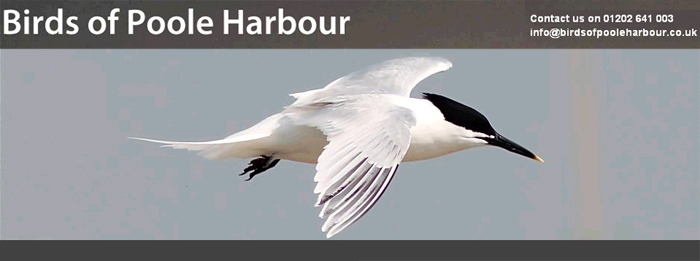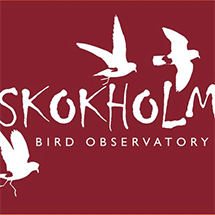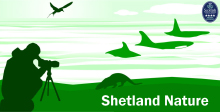Weekly round-up: 27 May - 02 Jun 2015
Some really unseasonal wild and woolly weather whipped its away across the country quicker than a seedy Tory MP can get to a vice den, as a somewhat robust deep low pressure system ensured that the latest review week concluded with strong southwesterly gales, with gusts well in excess of 70 mph, and plenty of rain to keep some areas on the quagmire side of damp.
The temperatures did at least start to buck up (the thermometer barely exceeding double figures in some northern regions) as the new gales came through, sucking up considerably warmer air in to the bargain - a moist feel (there was a decidedly rare waft in the air for sure) starting to pervade the early June air - making something of a change from the bright, breezy and rather cool conditions that had come along in the days prior to the weekend.
Familiar late spring continental overshoots did battle their way through regardless but it was no surprise to see that the strong northwest to westerly airflow produced another fine, fine couple of rares from across the pond…picking up pretty much where we were last week in fact.
Without further ado then, let’s get cracking with this week’s birds.
Before departing for the most northern climes of the Scottish islands, mention was made that perhaps a quick swat up on a few choice Nearctic goodies may be in order - the weather was highly suggestive of suitable transit for something from across the Atlantic and, as was highlighted on the RBA website last week, Dave Suddaby promptly went on to confirm such intuition when he found Ireland’s first ever spring Grey-cheeked or Bicknell’s Thrush out on The Mullet.
What seemed blindingly obvious perched above the stunningly picturesque geos of Fair Isle, munching chef Orlando’s marvellous cheese & pickle sandwiches in a brisk west-nor’west airflow was that it wasn’t a matter of “if “ there was likely to be another US vagrant found, it was just “where” and “when”. The smart money from Team Café con Leche was on another American thrush and, so it proved to be…
Yes, just five days on from the Termoncarragh Catharus came the inevitable conclusion to such cheese-induced musings - the morning net rounds of May’s penultimate day saw Orkney’s North Ronaldsay yield a rather special surprise indeed - Britain’s 11th (and the island’s second) Veery.
Found in the mist-nets, once processed, this funky little thrush from a far spent sometime in the grounds of the kirk through to mid-morning before appearing later in the day in the Holland House garden. May 31st saw the bird still in situ on the island, but it proved somewhat elusive after appearing in the Observatory nets again - spending much of its time within the dense fuschias in the gardens at Holland and after a blank was drawn on 1st, the Veery was showing again on our final day.
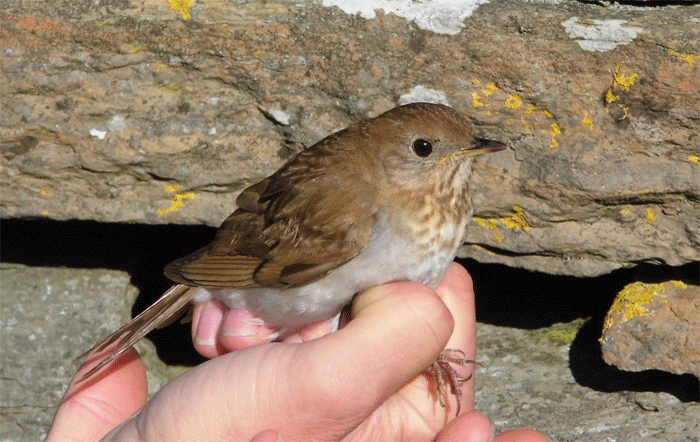
We’ve had one spring Veery prior to this one, found on Lundy Island on May 14th 1997 - that too was an “island second” following the somewhat infamous (at the time) 2nd for Britain that was trapped several times between October 11th and November 11th 1987. Why infamous ask the whippersnappers? It was initially identified (when caught) as a Thrush Nightingale and remained as such for at least the first 10 days or so of its stay. Only as the last week of October approached did the penny finally drop and all hell broke loose…
Many folk were twitching the Gugh Two-barred Greenish Warbler or dipping the St. Mary’s Black-throated Thrush when confirmation came through that the bird really was a Veery - a Sunday twitch aboard the Oldenburg followed and the Veery duly did the business, sometimes being seen side-by-side with a Swainson’s Thrush in a unique double Catharus scenario.
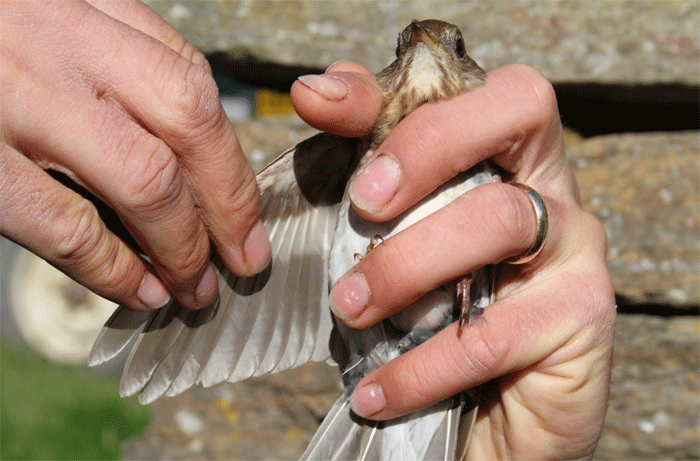
Britain’s first Veery was found back in October 1970 by long-time Norfolk recorder Giles Dunmore and birding legend (and one of Britain’s original “twitchers”) Howard Medhurst in the sallows at the bottom end of the valley at Porthgwarra. The 17 year wait until the Lundy bird followed and a further eight years elapsed until Britain’s third was discovered on North Uist late in October 1995.
Lundy’s second record (as mentioned above) was the 4th and the 5th became the second for the Cornish mainland (and the first twitchable mainland record in to the bargain) when found at St. Levan on October 13th 1999.
The 2000’s have seen a surge in records - after five appearances between 1970 and the end of 1999, the new millennium has seen six birds discovered in 15 years. The first of these was the first record for North Ronaldsay, a bird which spent six days on the island from the end of September 2002. Shetland claimed the next three; trapped on Unst on September 22nd 2005 (snaffled late the same day by a local moggy) with two Veerys coming within the space of 24 hours across October 1st and 2nd 2009 (on Foula and then Whalsay).
Our final record, prior to this week’s exciting discovery on North Ron was yet another distant bird - found in mid-November 2011 on Muck (Highland) where it spent nine days in total.
Tricky individuals one and all (especially for anyone not listing in 1987) - the next mainland bird will see a prompt assemblage of those in need…
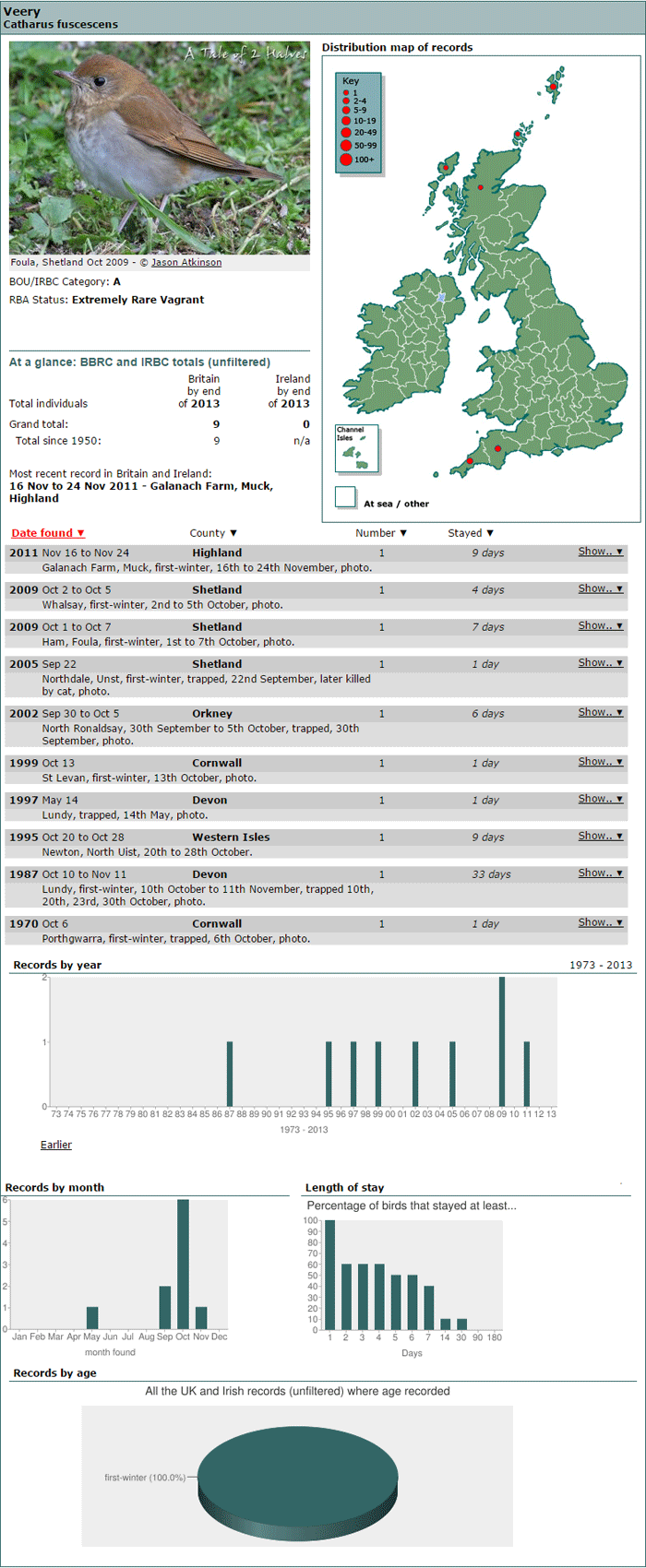
Rub your eyes and you’d think you’d been dreaming.
The last nine days have delivered not one, not two but an astonishing three different spring Catharus thrushes - a figure made all the more amazing by the fact that there’ve been three different species involved.
Whizzing in to the west Wales island of Skokholm on 2nd, after a deep low tracked swiftly in from the Atlantic was the hat-trick bird - Britain’s first-ever spring Swainson’s Thrush which now shares an arrival date with Britain’s first-ever Hermit Thrush in to the bargain.
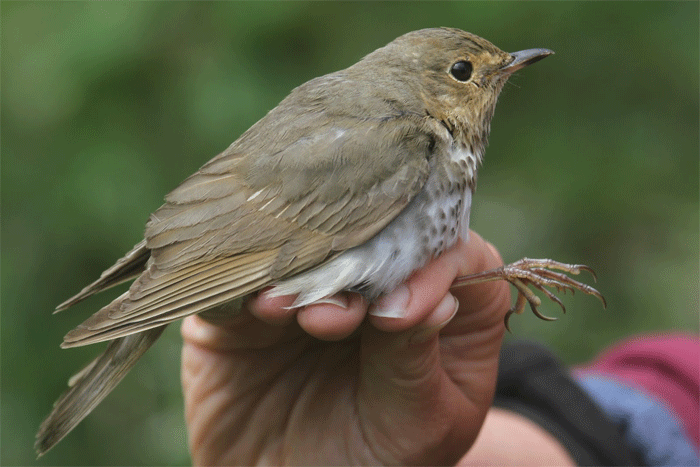
This remarkable record become not only the second for Wales, but also the second for both Pembrokeshire and Skokholm too - the first record there came in October 1967 and represented Britain’s first record as well (Ireland, as you’ll see below had already had one).
Even the most forward-thinking of rare-bird predictions couldn’t have foretold of three species of North American thrush being hurried across the Atlantic in the last week and a half - a trio made all the more remarkable for the lack of a windblown wood-warbler or sparrow.
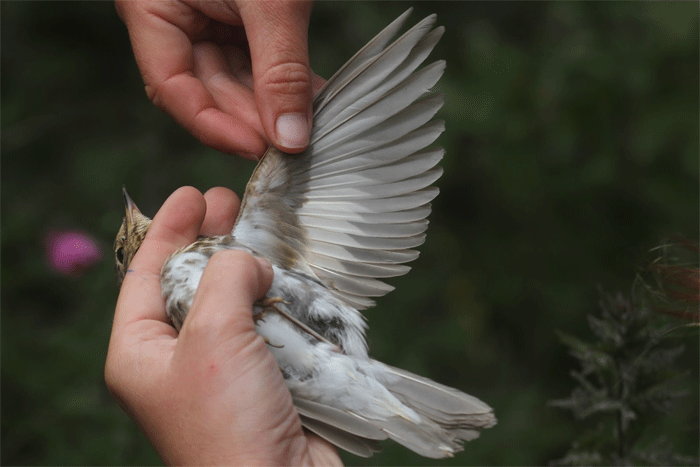
As a final aside, it is interesting to note the comparative number of vagrant spring Catharus thrushes recorded in Britain and Ireland now - Hermit Thrush is perhaps the surprise leader with three records (out of 12 in total), all of them falling on Shetland; Britain’s first was found on Fair Isle on June 2nd 1975; Britain’s sixth spent April 30th-May 1st 1998 on Fetlar and Britain’s 12th was another Fair Isle bird, seen between May 13th-16th 2014. Veery is in joint second place with two spring records (detailed above of course) out of a total of 11 in all.
Level-pegging now is Swainson’s Thrush - the first for I&B was found freshly dead beneath the Blackrock Lighthouse (Co. Mayo) on May 26th 1956 along with the all-together more-healthy bird mentioned from Pembrokeshire above (a further 38 autumn-only records have followed), while we know that last week’s Grey-cheeked/Bicknell’s Thrush was the debut spring bird, from a total of 70 in all.
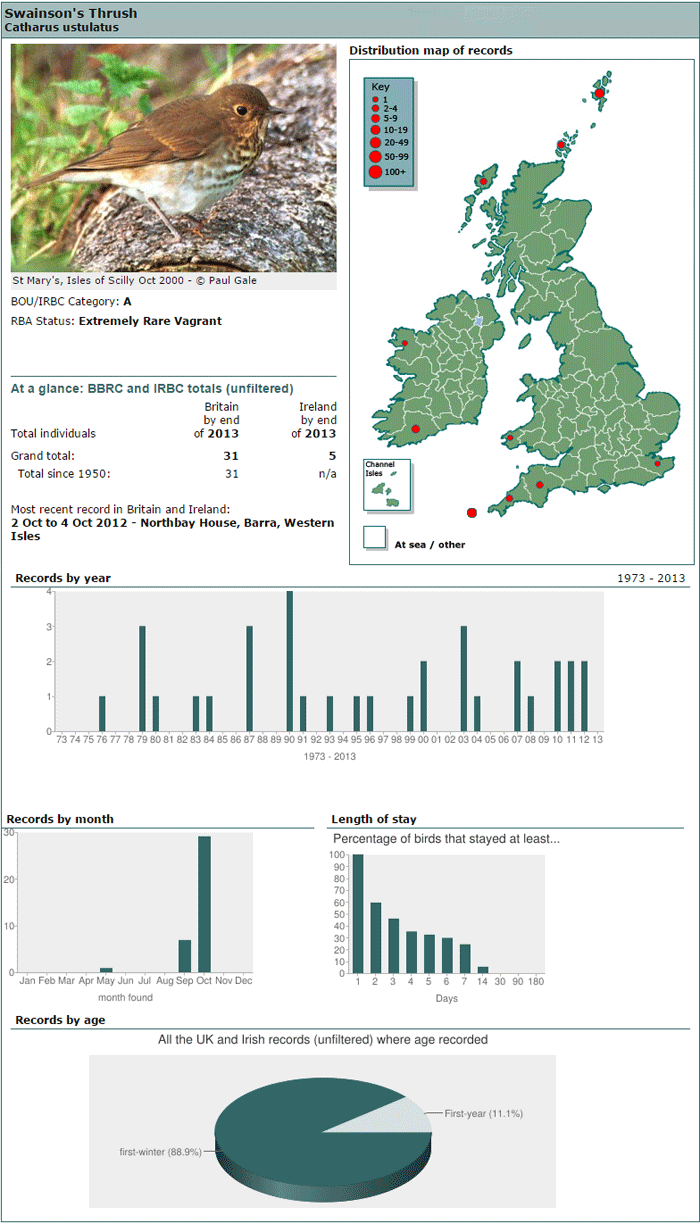
Readers who pay any sort of attention to the weekly witterings presented here will know only too well just how much we like to try and link bird sightings together and muse, Harry Hill-like on “what are the chances of that happening?”. Well, the week’s #2 rare is absolutely slap-bang in the middle of said category as the question is asked “is this the same bird back again?”…
Black-winged Pratincole is the species under the spotlight and it would take a brave soul to back against the bird that arrived at Northumberland’s Bothal Pond, not far from Ashington and Morpeth, as being anything other than the same bird that appeared (as a 1st for the county) at Hauxley NR (less than 10 miles away) on June 12th last year.
This week, the B-wP rocked up on the afternoon of May 29th and remained in place until the morning of June 1st, when it appeared to depart just after 7am - perhaps the same game of cat & mouse may be on the cards as happened last summer?
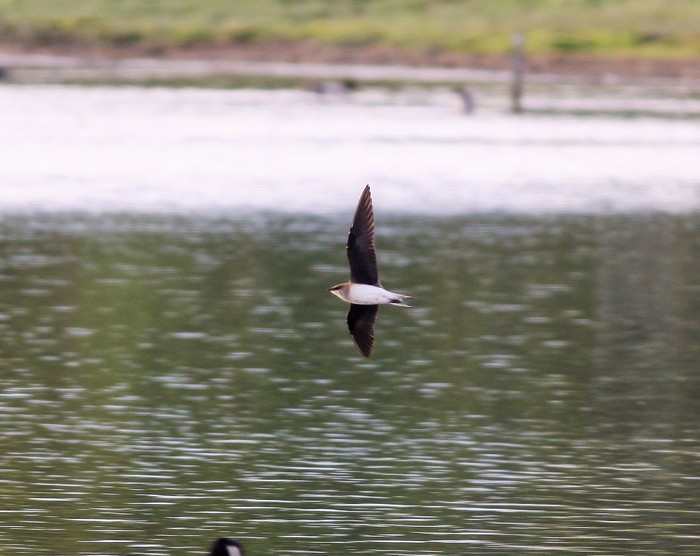
That initial appearance at Hauxley last June was followed by the bird alighting in Cleveland, at Saltholme Pools, the day after leaving Northumberland. There were no sightings anywhere for over three weeks until the surprise showing in Durham, at Hurworth Burn Reservoir on July 5th-6th before it moved north again, to Holywell Ponds on 7th. A week later it was in Lincolnshire, then Norfolk departing high to the west on 17th from Stiffkey Fen before reappearing again, this time in Cambridgeshire, along the Ouse Washes where it came and went until July 27th. A report followed from East Sussex (on 30th) and by August 2nd the Pratincole returned to the Washes where it was last seen on August 9th.
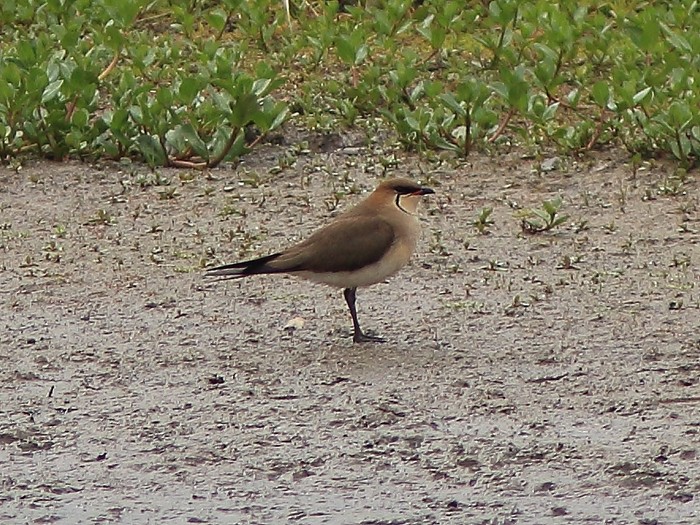
Whether the wandering wader will take in a similar six or seven county tour this summer remains to be seen of course, but there’s every chance that a repeat performance may be in the offing. Place your bets as to which county gets it next.
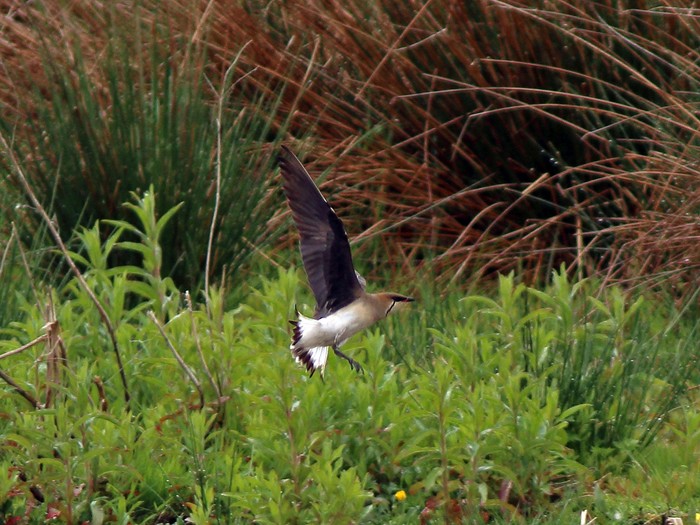
Before departing from Bothal, birders watching the Black-winged Pratincole late on the evening of 29th also managed to snaffle up a supreme padder for good measure - the first Gull-billed Tern for the county since the double made it to St. Mary’s Island and Snab Point on May 9th 2006. Staying for only 15 minutes, the Tern popped in again briefly the next day and then that seemed to be that.
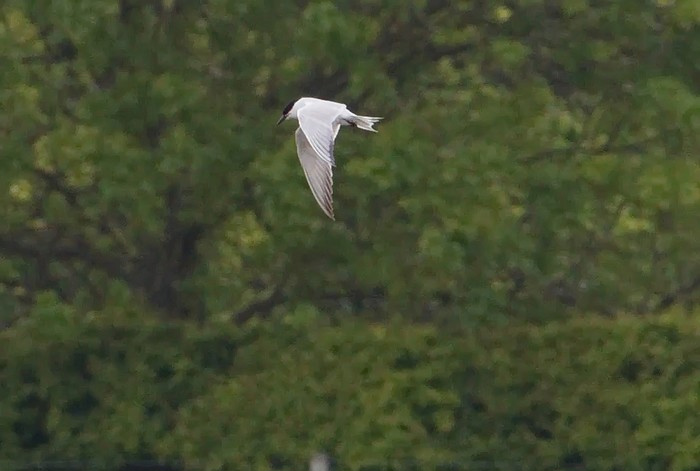
Despite a few widely “available” Black-winged Pratincoles of late, the rarity value of this superb species still remains high - 43 birds accepted in all (including last year’s wanderer) with nine records falling in the last 15 years, several of them being twitchable.
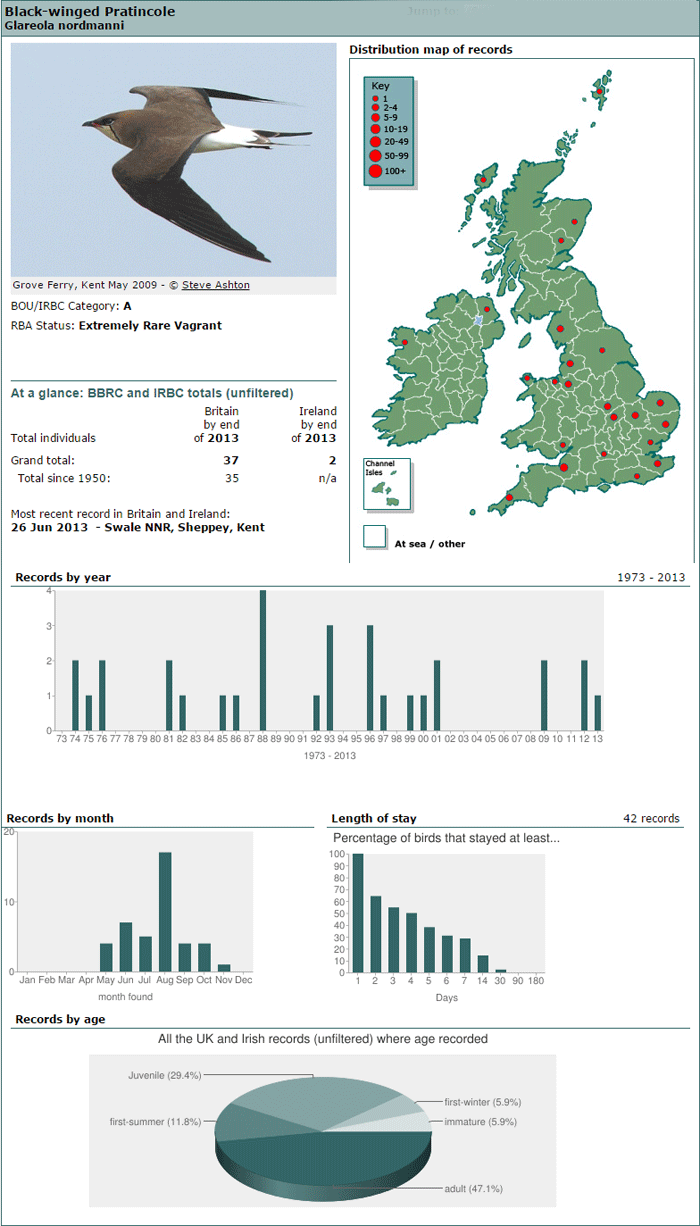
Those rare North American thrushes have aided and abetted the exciting, though somewhat wonky and rather atypical, look to the main acts of this week's roundup, while the Northumberland double-bill has lobbed some new goodies in to the pot. The only staple from recent weeks that remained was the Titchfield Haven Greater Yellowlegs which held station with the still-present Icelandic Black-tailed Godwits throughout the week to 2nd.
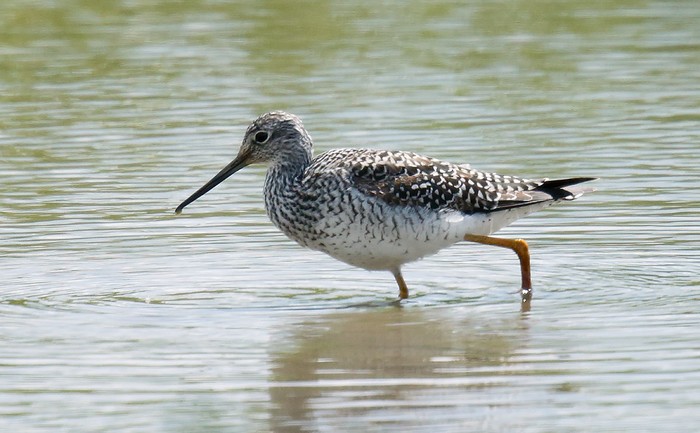
There’s now a chance that the ‘legs may stay put for the summer - depending on whether the islandicas its with are first-summers and/or non-breeding adults. If that’s the case, there’s every possibility that the rare vagrant may stay put. If the urge to move north overtakes the summering urges of its companions, then it could end up anywhere.
(Given the recent prediction debacle on the Scilly heron, there’s little point in taking any notice of any musings re:- the GL whatsoever…).
Taking a "headliner" bow is one of the most talked about and most admired birds of the spring to date ~ and it was a species that pretty much anyone taking a peep at the words here in will have seen before. That said, few birders will have seen the species quite like this ~ that bow is much deserved then and it comes courtesy of the storm-blown, mind blowing stunning full-on summer female Grey Phalarope that arrived at Brandon Marsh (Warwickshire) during the morning of 2nd.
Holy Smoke Batman... this was a full on, smokin’ hot Red Phalarope!
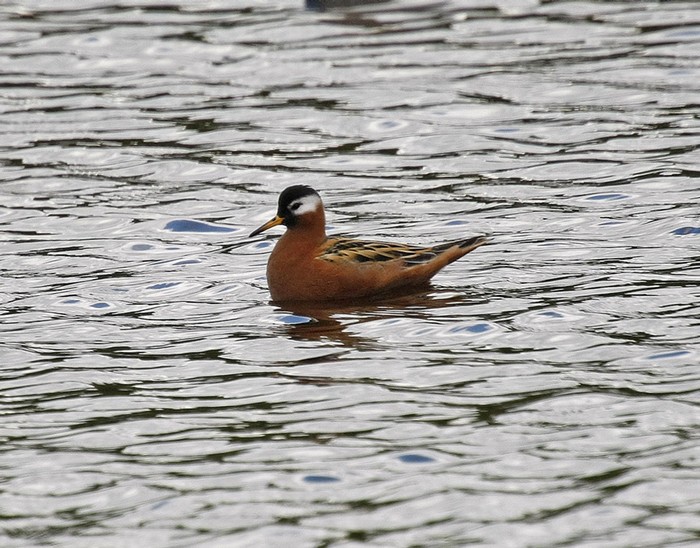
This gorgeous looking individual is the first to be seen in the county since the late autumn of 2009 and is one of just a handful of summer-attired ever to be recorded here - some recent, summer-dressed birds appeared in West Yorkshire (sometime around the turn of the 2000’s) and also on Shetland and in Lancashire.
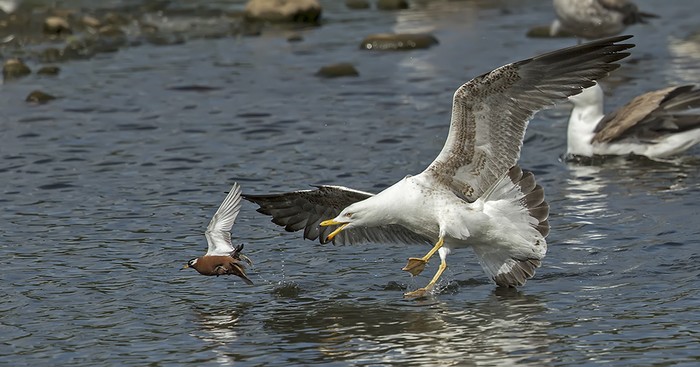
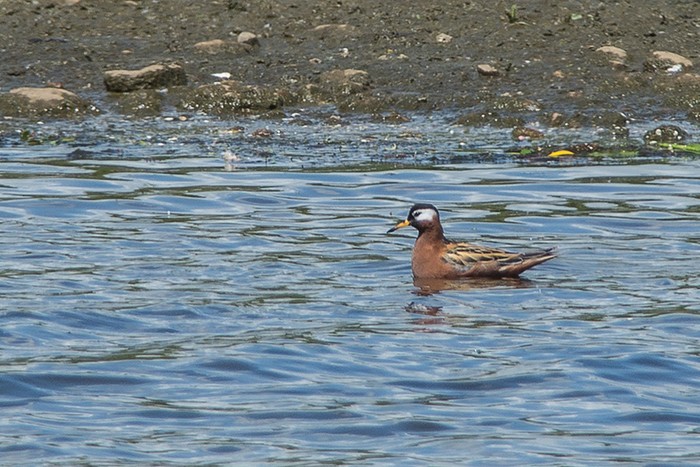
This week’s startling-looking individual’s location and fabulous plumage ensures it a place in the Hall Of Fame - a better example of this rarely seen plumage in British and Irish waters is hard to imagine.
What an absolute peach of a bird!
Along with the bright’n’breezy news of two really rather rare Nearctic thrushes within less than a week there was some fascinating, somewhat unexpected white-cheeked goose action within just a few days too...
Late in the day, at the end of last week’s proceedings came the arrival of a possible parvipes Lesser Canada Goose at Haroldswick, Unst on Shetland. That bird remained to 27th and some in-depth appraisal of a few images of the bird in question almost through up more questions than answers. Was this a big-end Lesser Canada Goose or small-end Todd’s Canada Goose? Well, maybe what follows may start to unravel the mystery.
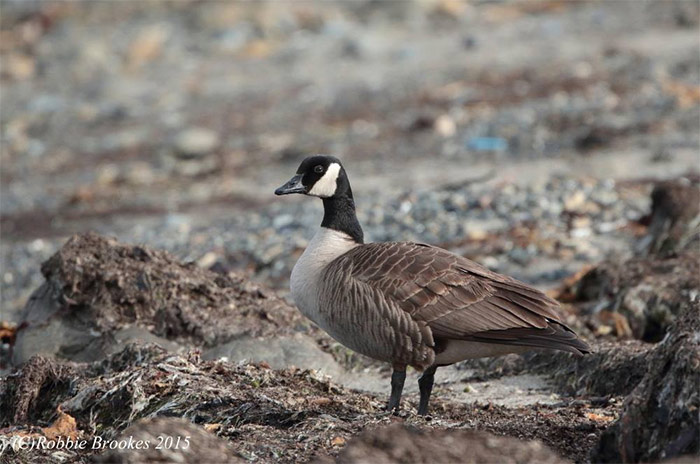
Why? Because it then it all got a bit wacky...another vagrant Canada Goose (complete with dusky gular strap) was found and photographed at Baltsound - that bird certainly appeared to have more of an interior Todd’s Canada Goose vibe going on. Indeed the longer you look at the shots, the more it resembles the original Unst bird, bar the gular band, duskier breast. So far so good.
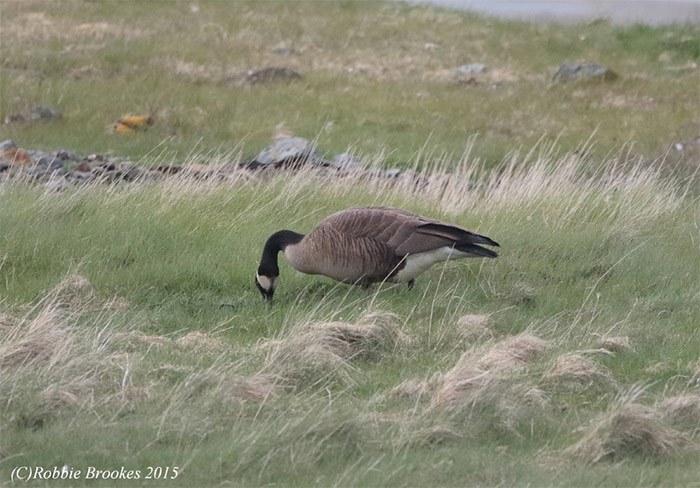
That second Unst bird remained to 30th and it was then that Shetland’s third vagrant appeared - this time on Foula - in the form of - well, I’m not really sure! Atlantic Canada Goose (form canadensis) was a first guess, a thought shared by local websites (tho’ saying it was just a British feral-type felt a bit rough on what must be a fine vagrant candidate).
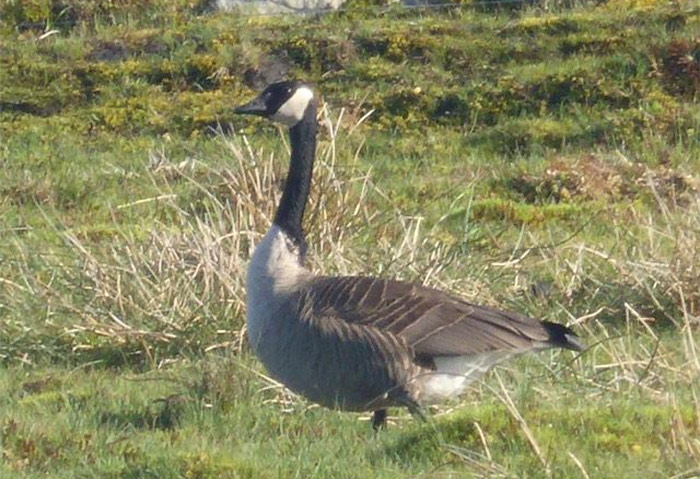
This bird was, from just the single posted photo a tough one to call - blocky of head and thick of bill - but as more time was spent inspecting the lone image, the three people voicing an opinion (me and two others...) all began to settle on this individual also fitting in to interior Todd’s camp (and, arguably being another individual on the cusp of a Lesser). It was most certainly as significant as the Unst double - a third vagrant white-cheeked goose on Shetland in the last week of May is pretty damn cool in anybody’s books right?
Not to be outdone was North Ronaldsay (enjoying a very fine purple patch that’s for sure) where the prize arrival of 31st was the interior Todd’s Canada Goose that was seen in fields between Howar and Stromness Point. The North Ron bird almost looks large enough to almost be a canadensis in a couple of images but that long snaky-necked look does clamour for a loud shout of interior. Ditto the “shallow” looking bill, dingy breast and black overspill at the base of the neck sock.
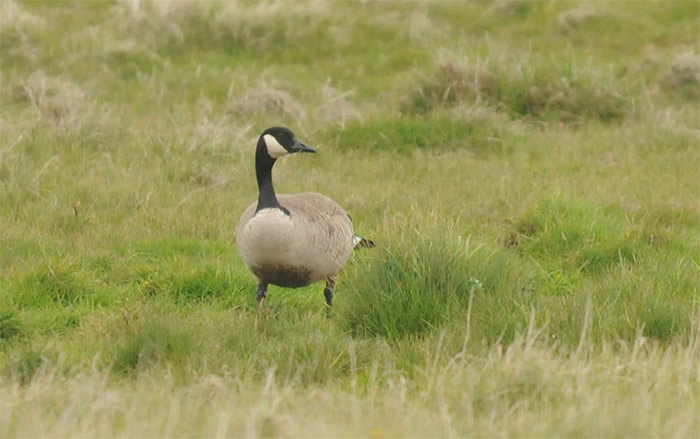
There’s no denying the fact that none of the one or two forms/species involved in this remarkable little happening is what you’d really be hoping for as May draws to a close, but they are arguably much more interesting than the much more predictable rare southeastern waifs and strays.
Nearctic vagrants are always grand in late spring and these honkers are no different.
A summer adult Sabine’s Gull in late spring is truly a thing of pure Arctic grace and beauty - and the Atlantic systems that have kept chugging skuas through the Scottish west coast islands were presumably also responsible for pushing a marvellous adult Sab’s in to Tiree’s Gott Bay on 27th. It then transpired that an adult had been seen at Salum, also on Tiree, the previous Saturday, so it may have been one-in-the-same - a thought perhaps enhanced with the third sighting on the island on 2nd, seen briefly at Loch a’ Phuill. Either way, it was a belter. The week’s second unseasonal Sabine’s Gull drifted past Porthgwarra (Cornwall) on 1st.
The inclement weather for the yearned-for east coast major rares this past few weeks has ensured that the passage of northbound skuas has kept chooglin’ along and this week saw a couple more three-figure tallies of Long-tailed Skuas added to an the already impressive spring haul up north.
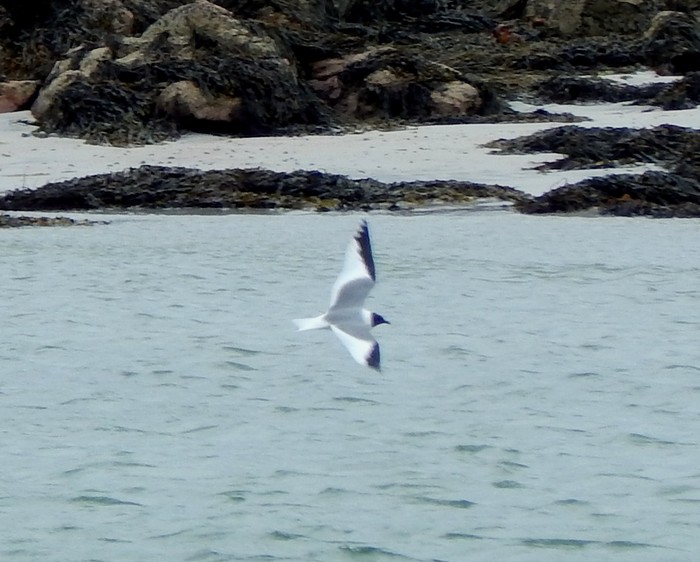
The headland at Aird an Runair, on the Balranald RSPB reserve on North Uist dominated proceedings once more - after 19 were counted there on 27th, the next morning saw 66 head by before 9am (including one flock of 28) and they were part of a day total for 28th of 325 birds in all. Another decent day was to be had on 31st, when 203 more were counted.
Elsewhere, Long-tails included 11 off the Ayrshire coast on 28th, when a further five were seen between Rhum and Eigg (Highland) with the same date also seeing reports come from the ferry between Stornoway to Ullapool, off Ynyslas (Ceredigion) and also, more surprisingly, from the east coast, where one was noted from Minsmere RSPB (Suffolk).
A sub-adult Long-tailed Skua flew across Somerset’s Chew Valley Lake on the evening of 29th, departing to the WNW, while three were noted on Orkney, at Stenness on 30th. A further four followed on June 1st - singles logged off Ayrshire’s Salcoats, Anglesey’s South Stack RSPB and Cork’s Galley Head while two flew past Cumbria’s Bowness-on-Solway. The final day of the review period saw one pass Stevenson Point (Ayrshire) and another pitch up on the Connemara Golf Links on the coast of County Galway.
Pomarine Skua were in shorter supply as June came along - seawatchers at Balranald managing 17 birds on 28th, two on 29th and 37 on 31st. Down on South Uist, eight Poms flew past Ardvule on 31st (along with a single Leach’s Storm-petrel) while away from the Outer Hebrides a further eight were noted; three in Ayrshire, two in Cornwall with singles for Lancashire, East Yorkshire and West Sussex.
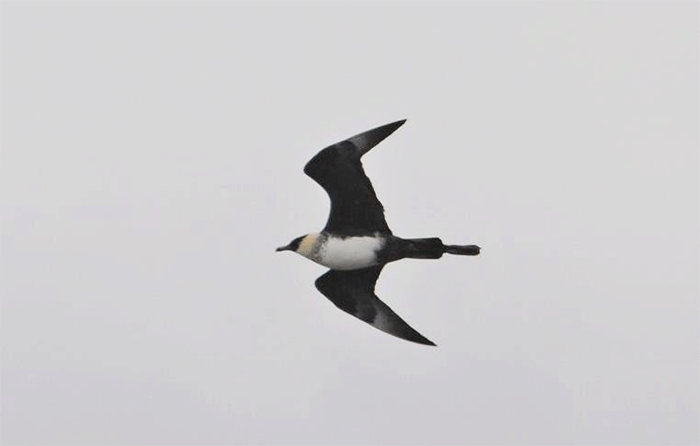
The week concluded on 2nd with half a dozen Poms off Chesil Cove (Dorset), one was also noted off nearby West Bexington and another pale adult was seen on the River Severn in Gloucestershire. More singles followed in Devon and Glamorgan and two were seen from Pennance Point (Cornwall) while another Leach’s Storm-petrel was noted, this one seen from the coast of Pembrokeshire, off Wooltack Point. The first Balearic Shearwater for a while was picked up heading past St. Ives Island (Cornwall) on 2nd.
RBA reviewers do love a banana-bill to write about, so we may as well doff the cap to the late news of a fly-by White-billed Diver off Rubh Arnal, North Uist on 22nd. Picking up one of these heading by you (when largely unexpected) is quite some buzz…
On the Isles of Scilly, the first-summer Squacco Heron continued to commute to assorted locations close to Porth Hellick, on St. Mary’s through until the evening of 2nd. There’s been no news on any of the Night Herons present on the same island since the evening of 26th, so perhaps they’ve not settled in to doing the do after all. One other rare beastie within the same family group that was still around the islands was the adult Purple Heron that again headed past St. Martin’s Daymark on 28th - completing upwards of two weeks there spread across just four sightings.
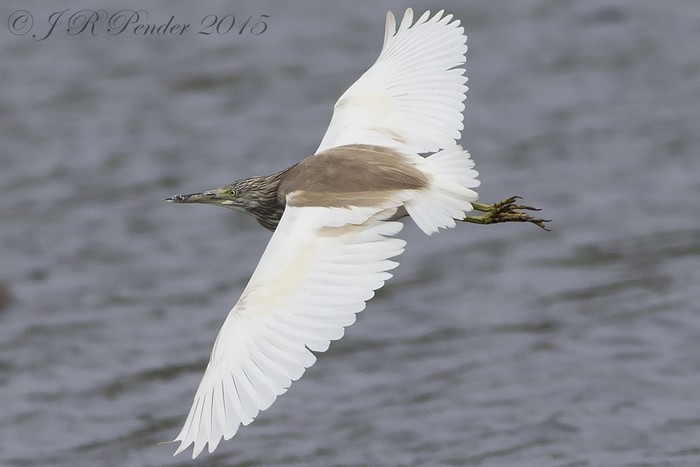
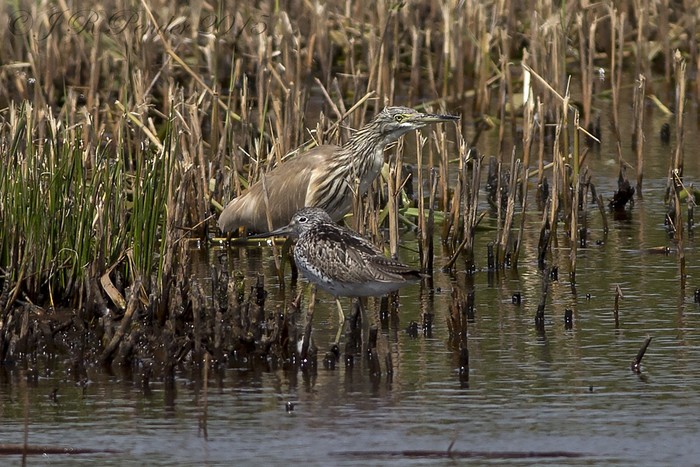
Back to all things Nycticorax where there was still one mainland Night Heron to mention - still to the west of the pretty Tresillian River, east of Truro at St. Clement on 28th. Also in Cornwall, the first-summer Purple Heron was at Drift Reservoir to 29th with the young bird remaining at Lodmoor RSPB (Dorset) through to 28th at least.
In the heart of the Suffolk borderlands, the singing male Little Bittern stuck it out around the Lakenheath Fen RSPB reserve through until 1st at least - calling frequently, sightings were far-less common, although he did venture up to the tops of the reeds for a few minutes on 31st.
Two Cattle Egrets were seen in Northamptonshire on the morning of 27th, flying over Maidwell - the first county record for just over three years - while the last day of May saw a singleton pop up near Cooling (Kent).
The “rarest” Great White Egret of the week was undoubtedly the bird that was found at Da Water on Fair Isle at some eye-wateringly early time on 31st - a first record for the prestigious island (though perhaps not was to be expected in the raging southeasterlies that it arrived on). It was also the first on Shetland since one on Whalsay in December 2011 (there’s even half a chance that it could be the bird reported from Orkney last week).
The week began with a Great White Egret still in place near Brawlbin (Highland) along with two early morning birds over Thorne Moors NNR (South Yorkshire) and a brief visitor at Mickle Mere (Suffolk). A second Suffolk bird lingered at Minsmere RSPB to 28th with further loners noticed at Langford Lowfields RSPB (Nottinghamshire) and still at Stodmarsh NNR (Kent). The 29th saw two more Kentish birds head across Lade and singles on 30th were at Nosterfield (North Yorkshire) and Meare Heath NNR (Somerset). May’s final day saw five birds logged in all (including the Fair Isle and North Yorkshire birds) - the others seen at Ham Wall RSPB, Lytchett Matravers (Dorset) and across the disused airfield at Harrington (Northamptonshire).
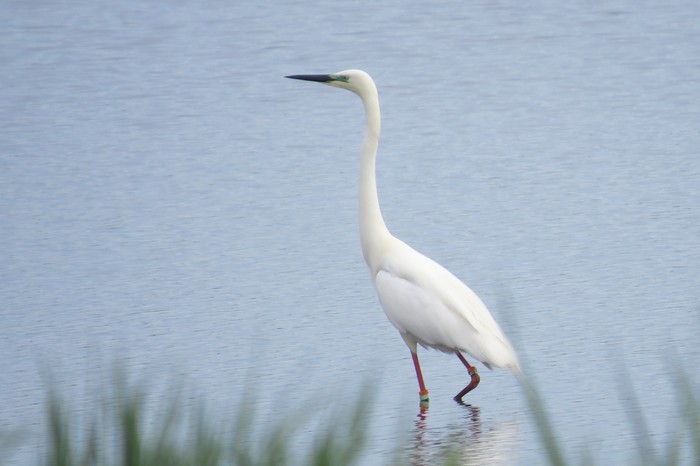
New on June 1st was the Great White Egret at Low Newton-by-the-sea (Northumberland) - tho’ this one is presumably the same bird which was seen in the county last week (it then moved to Newton Pond by 1st) and on 2nd, one headed past Hopton-on-Sea (Norfolk).
The pools off of Cley’s famous East Bank held the largest group of Spoonbills seen this week, nine noted there on the cool’n’breezy evening of 31st. Odd singles and doubles were also noted around the Norfolk coast, from Burnham Overy Staithe to Breydon through the week. Kent held a flock of six at Grove Ferry NNR on 27th with five of them appearing on 30th at Stodmarsh NNR. Three or four more were noted in the county in to June, including two at Reculver on 1st.
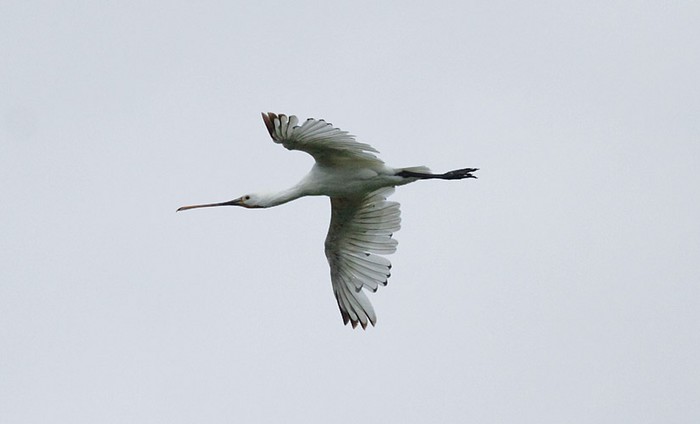
Hampshire didn’t fare too badly either - five were at Pennington on 31st after three were noted at Keyhaven Lagoons on 28th (and another was at Farlington on the same date). Four Spoonbills were at Gibraltar Point (Lincolnshire) on 27th, with three until 29th while in East Yorkshire, three were seen at Kilnsea on 27th with one at Flamborough Head the same day. Further north again, a roaming bird was seen at Port Clarence and Haverton Hole (Cleveland) between 28th-31st. Further a field, two birds remained in Poole Harbour to the start of the week and singles lingered in Essex and Wexford (at Tacumshin until 31st).
Scilly’s fifth Common Crane clocked up almost three weeks on the island when seen again on Gugh (from St. Mary’s) on 27th before appearing again on St. Agnes on 1st. The only other reports this week came from Carlingford Lough (Co. Louth) where a singleton was seen on 28th, from Wem (Shropshire) on 30th and Cresswell Pond NWT (Northumberland) where two were logged on 2nd.
Kent’s marshlands held a couple of singing Spotted Crakes this week, heard at Stodmarsh and Grove Ferry (on 27th and 30th respectively) while a popular singing male Corncrake lingered at Hale (Cheshire) throughout the week with another still in place on Shetland’s south Mainland until 31st.
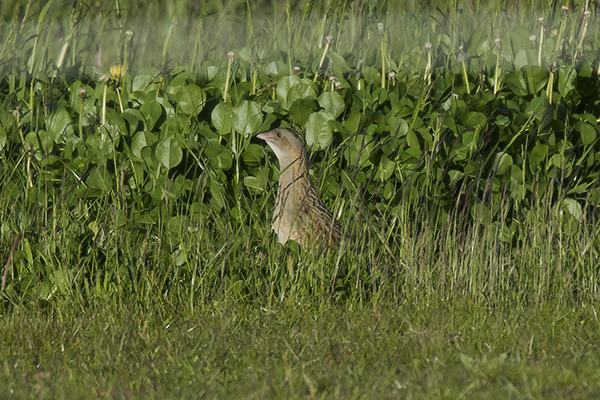
Unlike those migrating quartet of vagrant Canadas up north, aabsolutely not new was the still present Black Brant at Spurn YWT (East Yorkshire) - there to 27th. Also at Spurn this week, something all together more special for the site - the area’s first American Wigeon, a young drake, which appeared on the Kilnsea wetlands before dropping down to the Holderness Pool and departing south on 31st. He was back again (along with a female Eurasian) on 1st - and, despite initial thoughts, it seems that the Spurn drake was indeed different to one of the two noted on the afternoon of 31st at Saltfleetby (Lincolnshire) and then (in the evening) back in East Yorkshire) at Bewholme - the two East Yorkshire drakes both lingered to 2nd.
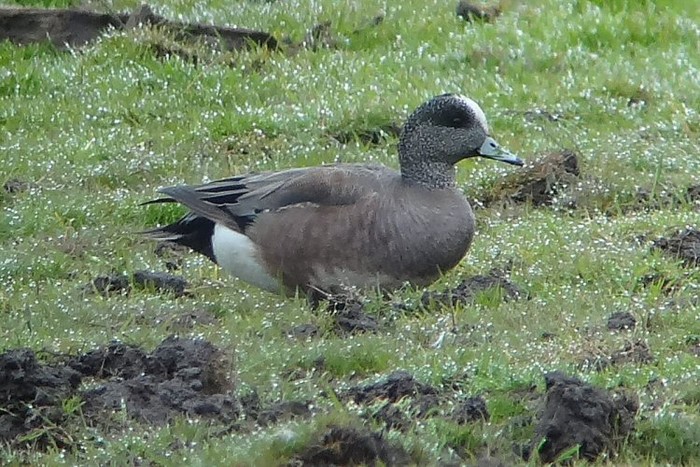
What the second bird was in Lincolnshire and east Yorkshire is something that any interested parties will, I’m sure, be in touch about to tell me all (two accompanying females with both drakes were at one time or another reported as female Americans . There’s one more Yankee Doodle Dandy to tell you about too - he was at Loch of Strathbeg RSPB (Aberdeenshire) on 28th.
A new drake Green-winged Teal was found at Carr Vale NR (Derbyshire) on 30th, where he remained to 2nd. Another has also been seen “recently” on the Hebrides, at Loch Bornish on South Uist.
The extremely fine looking drake Ring-necked Duck remained at the New Lake, University College in Blackrock (Co. Dublin) to 28th while on Shetland, the duet of drakes lingered on the Loch of Hillwell to 1st.
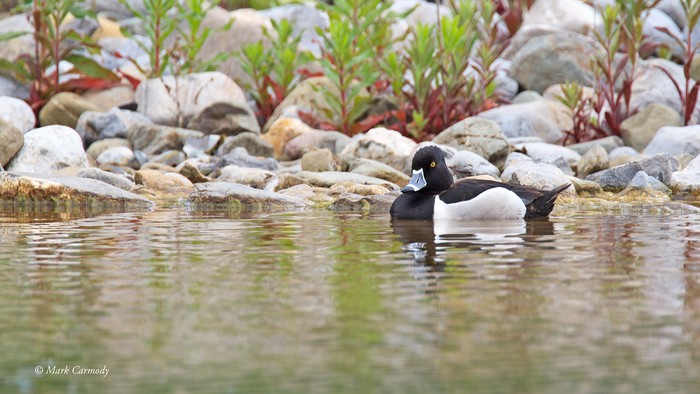
The first Surf Scoter in a fortnight was seen (inevitably) at Blackdog (Aberdeenshire) - a female there from 31st - while not far away the drake King Eider was in his full regal pomp along the Ythan Estuary to 1st.
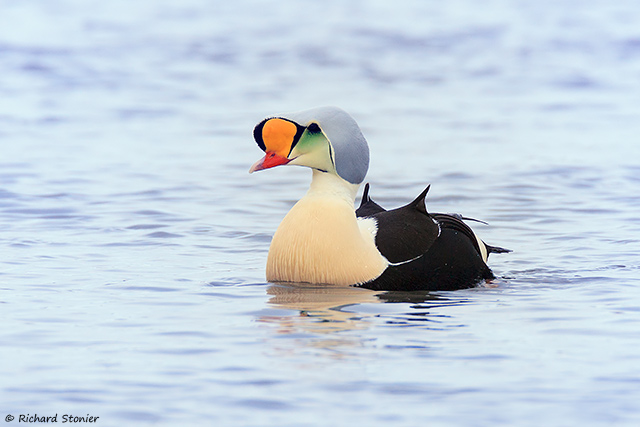
Spending a few hours in the far northeastern corner of Scotland was the Broad-billed Sandpiper found amongst a small flock of migrating shorebirds in Findhorn Bay (Moray) on 29th - only the fourth county record and the first there since June 17th 1990 when one was seen at Kingston.
Rare too for the Scottish coast is Kentish Plover where a rather demure female spent two days at the end of May along the beach at Balcomie (Fife) - the first record for at least 15 years in the county.
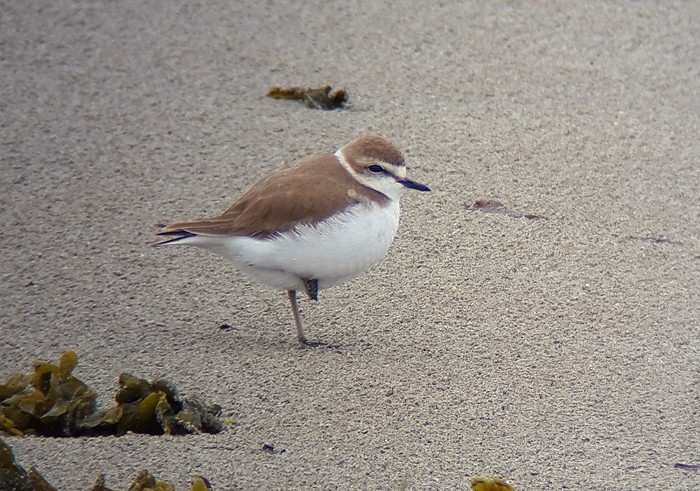
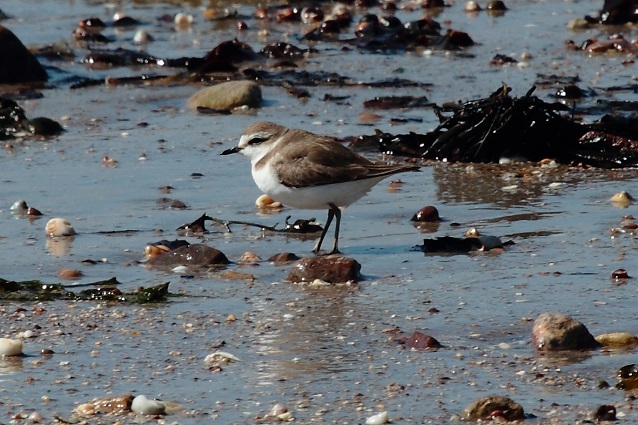
The somewhat shorebird friendly weather this week encouraged the arrival of another four Pectoral Sandpipers - the first dropped in to Loch Stiapavat, Lewis (Outer Hebrides) on 28th and was followed the next day by one at Tiln GPs (Nottinghamshire) which stayed to 30th. Also on 30th, was the Pec found at Lough Beg (Co. Derry) with the fourth of the week coming along to Dunnington (Warwickshire) on 31st.
Also new in Derry this week, and also on Lough Beg was the White-rumped Sandpiper found on 28th at Paddy’s Dubh. Perhaps “less new” was the second White-rumped Sandpiper of the week - seen at Frampton Marsh RSPB (Suffolk) from 29th - there’s every chance this may be the Norfolk bird from last week.
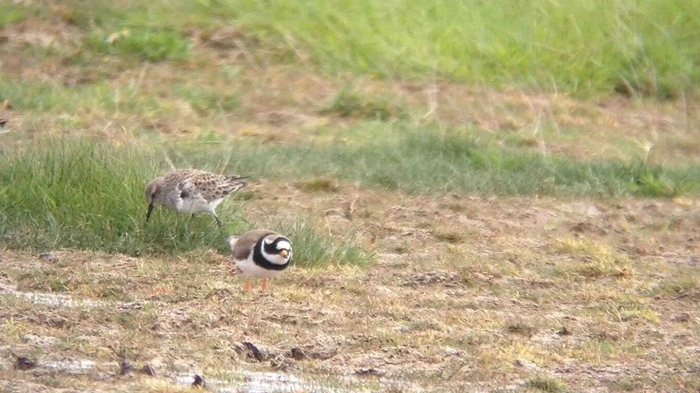
As mentioned a couple of paragraphs ago, the weather in the past week may not have been overly helpful to fans of overshooting Euro-vagrants but the conditions that have spread countrywide this week have been nigh-on perfect for dropping Red-necked Phalaropes left, right and centre and the past seven days have been mightily impressive time (one of the best spring week’s ever) for this diminuitive spinning-top of a bird.
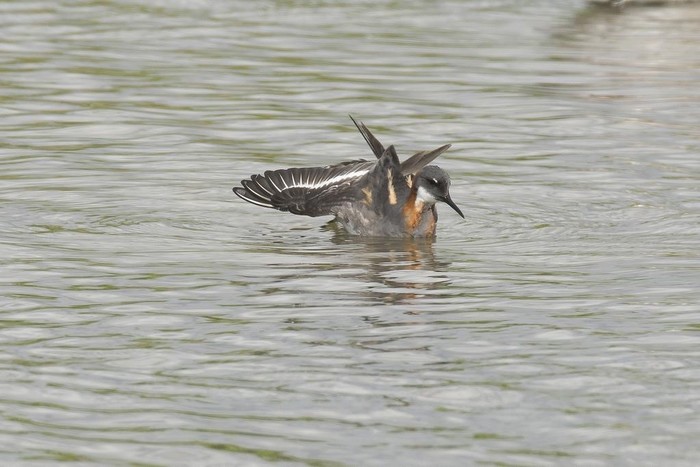
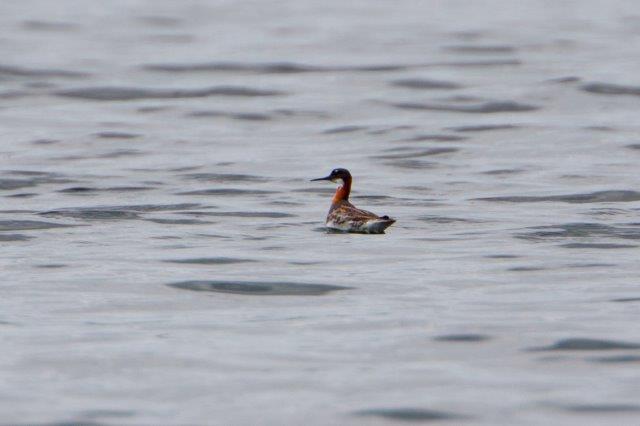
Up to 26 were recorded through the week - so let’s run things through day-by-day. The week began on 27th with a brief visit to the popular pools on Pope’s Marsh, Cley NWT and this was followed on 28th by a small flock of three Phalaropes on North Ronaldsay and another at Slimbridge WWT (Gloucestershire). May 29th saw the appearance of County Antrim’s first Red-necked Phalarope for I don’t know how long (at least 15 years) on the pools at Belfast Lough RSPB while at least seven were recorded on both May 30th and 31st.
Through the penultimate day of the month, singles were reported as follows: first came a new arrival at Sidlesham Ferry (West Sussex) and it was followed by Cley’s third bird of the month, this one on North Scrape (a bird which may have been seen mid-morning at Kelling as well). Minsmere’s male was noted again (or could it too have been different?) while Kent saw one arrive at Leysdown-on-Sea. Across in Gloucestershire, another newbie was found at Cotswold Water Park while also fresh in was the female at Sandbach Flashes (Cheshire). North Ronaldsay scored a fourth to round off a busy day for the species.
...and it was just as busy in R-n P world the next day too - new singles were found at Theale GPs (Berkshire), Hatfield Moors NR South Yorkshire), Holland Haven (Essex), Tophill Low NR (East Yorkshire), again on North Ron (the 5th of the week there) while two made themselves known in Lothian, on the lagoons at Mussleburgh. Another new arrival was noted on 1st, this one found on the scrapes at Kilnsea (East Yorkshire) while the 2nd saw another drop on to the Norfolk coast, at Titchwell RSPB with a second Cheshire bird alighting at Burton Mere Wetlands RSPB and a further two flew across Mudeford Quay and out in to Christchurch Harbour as well - birds that presumably then appeared later the same afternoon at Blashford Lakes HWT (Hampshire). The final newbie in a marvellous week for the species was found on the pools at East Chevington (Northumberland) during the evening of 2nd.
A pair of Black-winged Stilts were found at Frampton Marsh RSPB on 27th where they stayed until the afternoon of 28th. Logic (sort of) dictates that the two birds that arrived in South Yorkshire, at Potteric Carr, on 29th may have been the same pair but they didn’t stick around too long, gone before noon. Two more Stilts were at Sandwich Bay (Kent) on 30th while one was noted at Sidlesham Ferry from 29th-2nd.
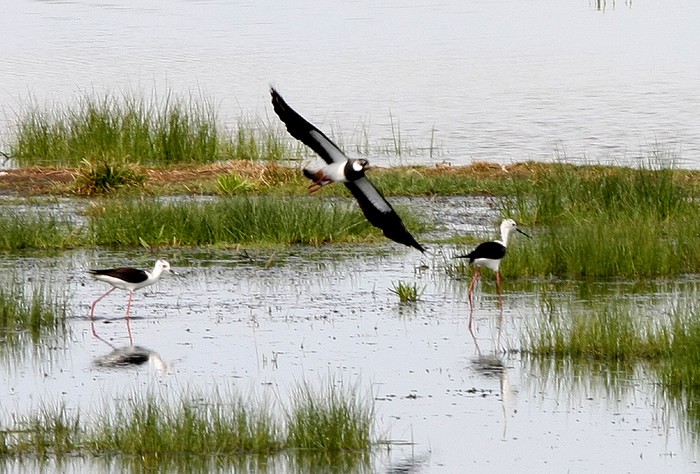
It has also been another busy-ish week for Temminck’s Stints - another strong showing totalling 14 birds across the past seven days spread (as last week) across eight counties. Four birds arrived at Rainham Marshes RSPB (London) on 28th (with three remaining to 29th) while there were twos for Rutland Water (Leicestershire from 28th-1st, Frampton Marsh RSPB on 30th and at Upware (Cambridgeshire) on 31st. Single Temminck’s were at Martin Mere WWT (Lancashire) on 28th; Bowers Marsh RSPB (Essex) on 29th; Trimley Marshes SWT (Suffolk) on 30th and at Hickling Broad NWT (Norfolk) on 1st.
The only Dotterel recorded away from altitudinal breeding grounds were the final two birds in the fields around Choseley Drying Barns (Norfolk). Birds arrived at this now traditional tripping ground early this year and these two are pretty late in leaving (Norfolk is hard to leave I can tell you). Oh, and after the above was typed, North ron snuck in with one on 2nd (they’ve had everything else, so why not one of these too!)
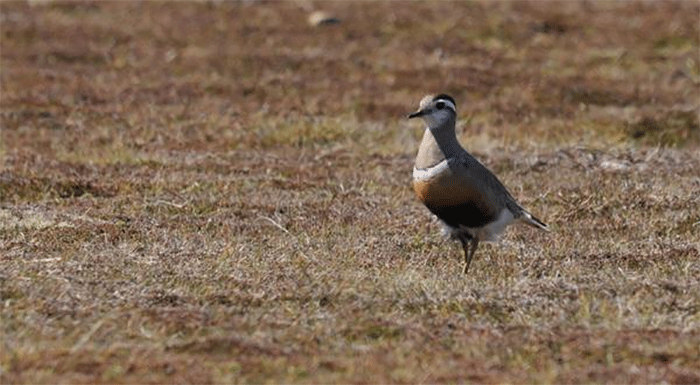
Making its 2015 debut was the Caspian Tern seen heading south off Gibraltar Point NNR (Lincolnshire) on 30th. Landing distantly out from the old Wash Viewpoint, this is the first record in the county for six years (when a one-dayer was at Freiston Shore on May 22nd 2009) and will become only the second site record for Gib., the first (an individual that was also the debut record for Lincolnshire) came way back when in September 1971. Just one of Lincolnshire’s 10 records has managed to be anything other than a one-day bird - one loafed around a couple of sites for three mid-summer days in 1981.
Over in West Yorkshire, a White-winged Black Tern was reported at Pugneys Country Park on 28th but there was no sign post the initial sighting. A more available bird, an adult was located at Swineham GPs (Dorset) on 2nd, where it stayed for much of the day.
With June knocking on the door, there were still three Ring-billed Gulls to mention - the regular first-summer was on the Hayle Estuary until the end of May (and the first two days of of June too) while another first-summer remained at Tralee Bay Wetlands (Co. Kerry) to 29th. The Outher Hebrides were represented by an adult in Benbecula’s Stinky Bay on 30th.
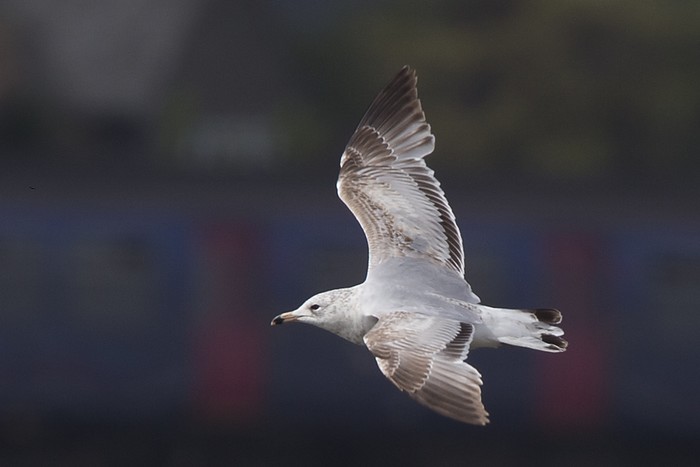
Ten Glaucous Gulls stuck it out for another late spring week, including two in Cornwall (at Downderry on 28th and St. Just on 30th), two on Orkney (at Graemeshall on 28th and North Ronaldsay on 30th) and also on the Outer Hebrides (on Lewis on 27th and South Uist on 29th). Singles were also noted in Highland, Essex, Cleveland and up on Shetland too.
Getting on for 30 Iceland Gulls was a far better showing given the time of year, with as many as 13 spread far and wide across the Outer Hebrides, including five around the Butt of Lewis on 27th (when at least eight were around the whole island group). Up to nine were seen across Orkney; three were at Marwick on 2nd, two remained at Yesnaby on 27th with singles at Graemeshall, Deerness and North Ronaldsay) with two or three on Shetland (including a 2w still on Fair Isle until at least 29th). Three more were logged in Highland and two were seen in Ireland, in Sligo and Kerry. Further lone Icelands were also found in Lancashire, Angus and Fife.
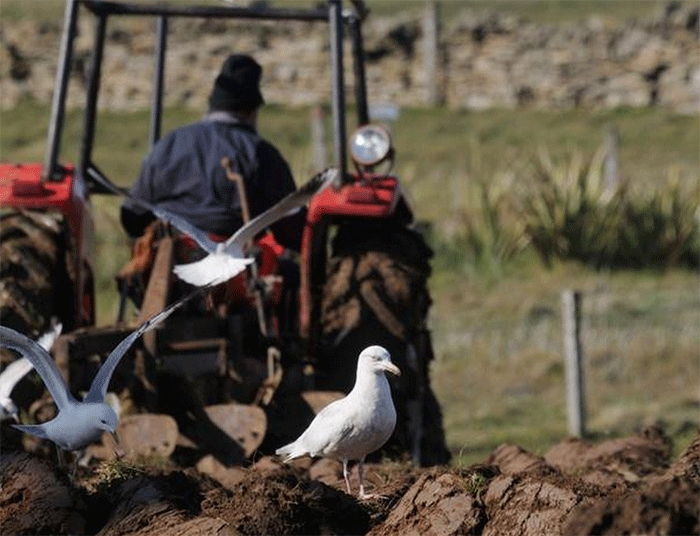
We’ll begin our little foray in to RaptorWorld by clearing up the news surrounding the dead adult male Red-footed Falcon found at Scaling Dam Reservoir (North Yorkshire) on 28th.
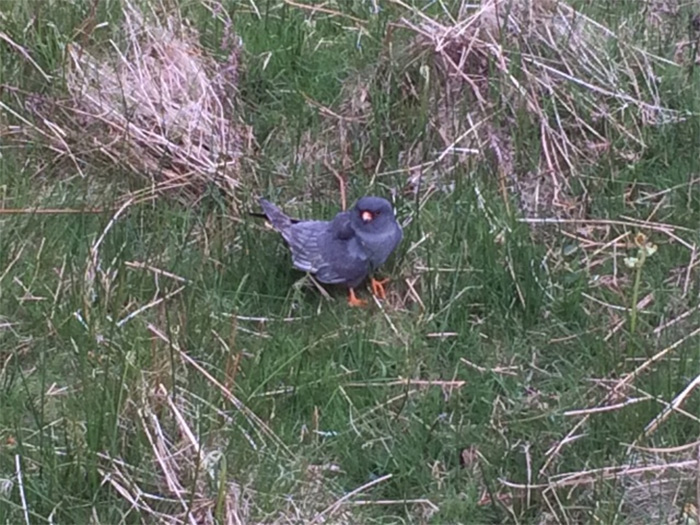
The initial sighting, from a non-birder, came during the day on Monday 25th - just a few 100 yards across the North Yorks/Cleveland border. The lady who saw the bird managed an i-Phone snap and the RSPB were asked to identify the mystery bird. A friend of the lady who took the snap learned about the sighting and went off to look for the bird, only to find it dead on the ground - she then maile the corpse to RBA HQ. (I just hope it doesn’t have white emblazoned across the underwing...).
All the more active and certainly not in full-on Norwegian Blue mode was the alive’n’kickin’ was the brief female at Boddington Reservoir (Northamptonshire) on 30th and the female that stayed for three days at Barcombe Mills (East Sussex) from 30th-2nd.
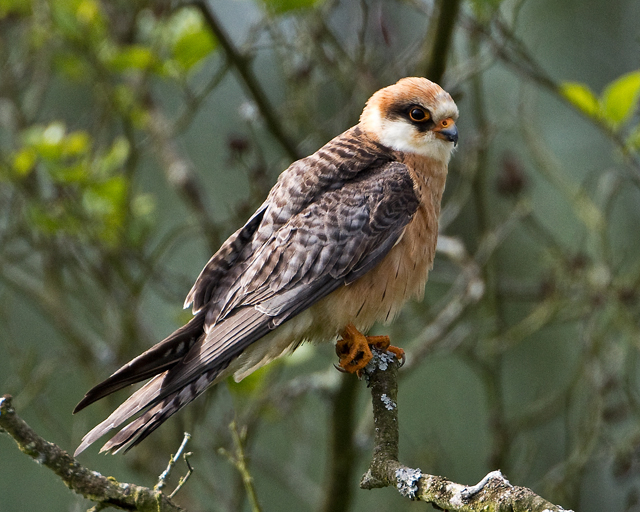
Not too many Black Kites to dwell on this week - the first noted drifted across the saltings at Lelant, alongside the Hayle Estuary (Cornwall) on 28th and was followed by reports over Ogston Reservoir (Derbyshire) on 29th and at New Holkham (Norfolk) on 1st.
Three separate Honey Buzzards started the week off on 27th; seen over Pinner (London), Gibraltar Point NNR (Lincolnshire) and in Norfolk, over Norwich Airport (I bet it didn’t have to fork out a tenner to leave the place - the most dubious fee ever known at a UK airport...airport development fee me arse...).
Kent scored two HB’s on 30th - at Stodmarsh and Knole Park with further reports coming from Castle Island (Northumberland), Painswick Beacon (Gloucestershire) and also from the one-time breedinmg site at Swanton Novers (Norfolk). Two more lone individuals were noted on 30th and 31st, over Girton (Cambridgeshire) and Drift Reservoir (Cornwall) while June 1st saw another lone individual head over Cramlington (Northumberland). The last report of the week came from the Welbeck Raptor Watchpoint (Nottinghamshire) on 2nd.
The popular pair of Montagu’s Harriers remained at Blacktoft Sands RSPB (East Yorkshire) throughout the week - here’s hoping there will be a happy outcome to all the activity on site.
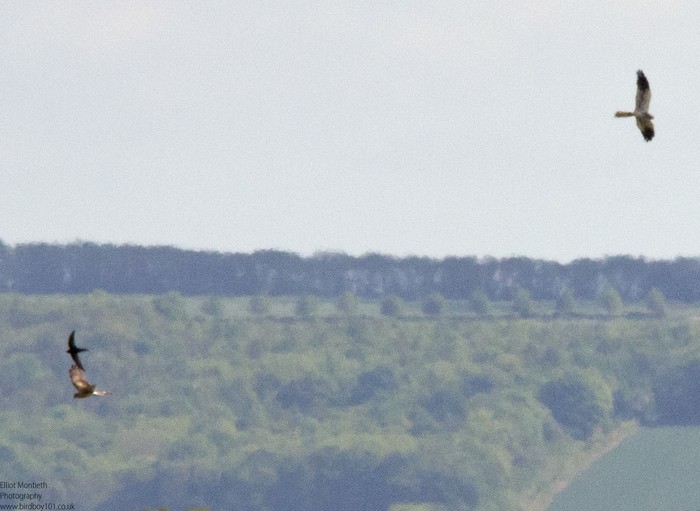
There’s much to be thankful for with regards to the Orkney Veery - it did mean that at least there was one star passerine within the week, a week that was unsurprisingly struggling to score heavily given the generally dismal conditions for the birds we sometimes dream of as appearing at this time of year…
With that in mind, we’’ll begin this section with news of the singing male White-spotted Bluethroat that was located at Grove Ferry NNR (Kent) early on the morning of 30th. Rarer still was the tremendous find on the Irish east coast, at Wicklow Head (Co. Wicklow) of a male Red-spotted Bluethroat, also on 30th - another bird which doesn’t seem to have appeared in the county for a couple of decades at least (just how rare it is there is something I’m still trying to find out!). Another Irish male was reported from Portmarnock (Co. Dublin) on 1st.
Female Bluethroats made landfall on Fair Isle on 29th (that’d be around 10 minutes after I left the island…), North Ronaldsay on 31st and, later the same day, a male was discovered on Noss (Shetland). The eighth of the week was a neat find in the far northwest of England, at Soddy Gap (Cumbria) on 2nd.
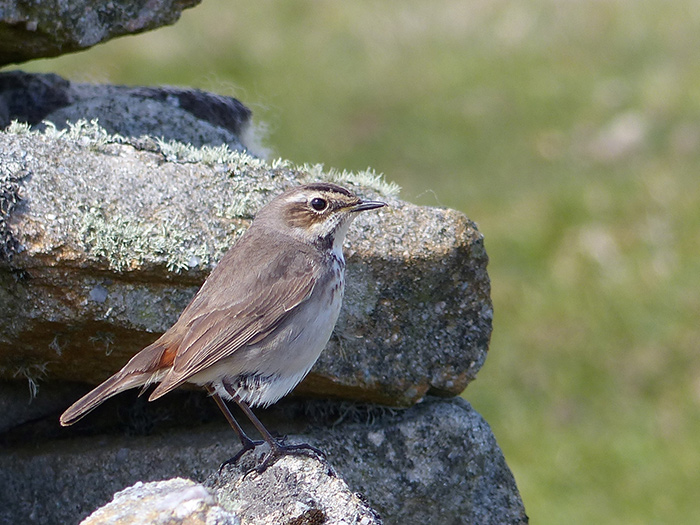
A new male Rustic Bunting made it through the brisk northwest winds to hit the pines at Baltasound, Unst (Shetland) on 27th (remaining to 29th) while North Ronaldsay’s male was present through to 30th. Not too far from the Unst Rustic was the female Western Subalpine Warbler which was heard to call at least once on 28th and so pushing it firmly away from Camp Moltoni’s.
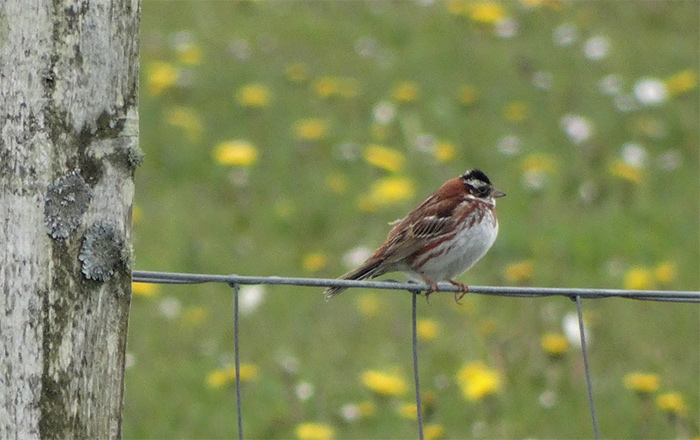
An elusive singing male Icterine Warbler roamed the unkempt jungle of Walsey Hills NOA (Norfolk) on 31st and another arrived on (guess where…) North Ronaldsay (but of course!) on 2nd, when a further two were found late in the day on Fair Isle.
In Cornwall, another new Hippo was the singing Melodious Warbler that was found at Ponsongath on 27th while - at last! - 2015 finally has a Marsh Warbler, one being found at Lower Stoneybrek, on Fair Isle on 1st.
The increasingly kindly Shetland weather then saw Out Skerries pull in the first Greenish Warbler of the year, along with two Bluethroats and an Icterine Warbler, all found on 2nd. And, no sooner had Skerries done the wing-barred warbler thing, then a second Greenish was found at Skaw, Unst.
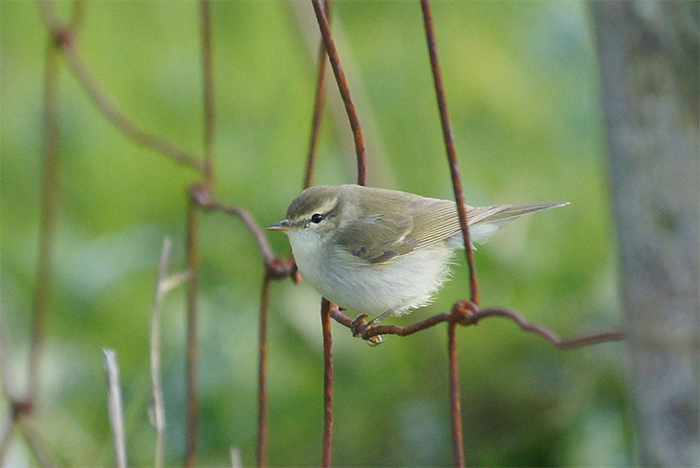
…and that weather just kept on dropping birds on to Shetland as the final day of the review period drifted away. June 2nd actually became something of a mini-classic in fact. Icterine Warbler can get the ball rolling and, in addition to the two on Fair Isle and the single on Out Skerries, a further eight birds were found across the island chain; four were on Unst (at Skaw, Norwick, Northdale and Baltasound), three were on Whalsay (at Skaw, Marrister and Brough) and one was on Mainland, at Esha Ness, bringing the Shetland tally for the day up to 11 in all.
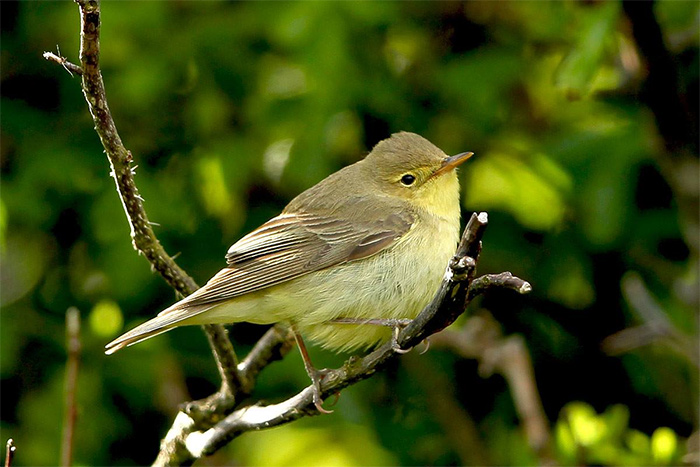
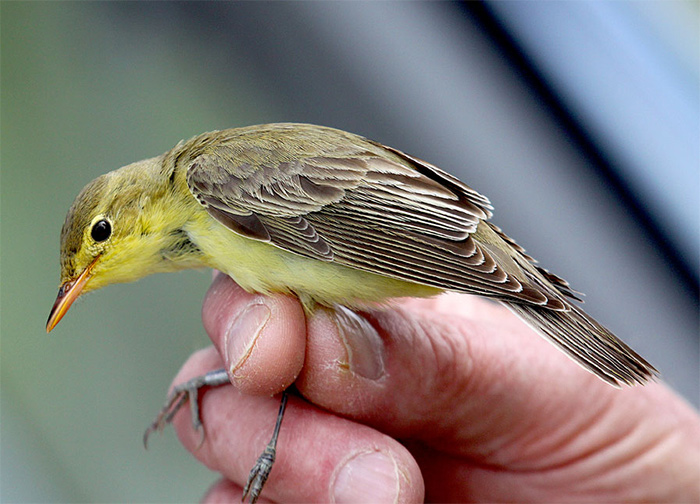
Unst also laid claim to at least eight Red-backed Shrikes including at least three around Northdale, while Whalsay welcomed three (at Skaw, Isbister and Sandwick) with singles on Fair Isle and at Dury, Mainland.
A couple of additional Bluethroats also came forth - at Haroldswick, Unst with another male on Whalsay, also at Isbister while an extra Marsh Warbler was at Baltasound and a new Common Rosefinch arrived on Fair Isle too.
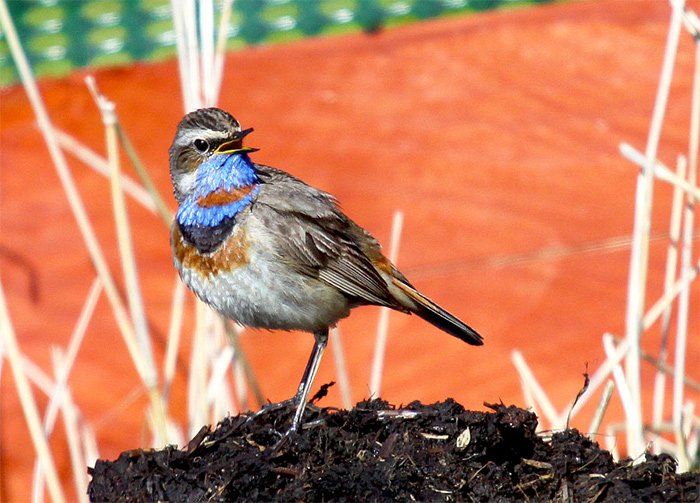
Bringing some much-needed colourful cheer to the proceedings were a bunch of widespread Bee-eaters that really were dotted around the country. The new review period began with a single over the sluice at Minsmere on the morning of 27th and it was followed by a flighty beastie in the Cornish valleys adjacent to St. Just later the same day - seen at Cape Cornwall, then Cot Valley and then Nanquidno. A couple of days later, the best birding spot in Britain this week - North Ronaldsay - saw the return of last week’s Merops and the 29th also saw two Bee-eaters arrive in East Sussex, at Berwick.
Back down to Cornwall for the (same?) Bee-eater which popped up at St. Buryan on 29th (where it stayed until early on 30th, departing to the north) while Dorset saw one or two move across the county on 29th-30th (present briefly at Swanage and Durdle Door). A mini-swarm of three appeared at Ayrmer Cove, Ringmore (Devon) on 30th whilst Orkney’s roamer found a way to Quoyloo, Mainland, also on 30th. The final bird of the week drifted across Reculver (Kent) on 1st.
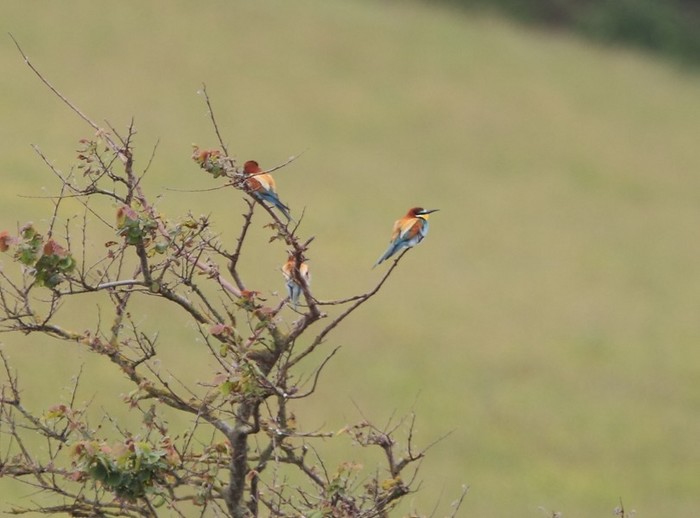
Thin on the ground this week were Golden Orioles - a singing male spent a little time at St. Catherine’s Point (Isle of Wight) on 27th while the first of two birds at Spurn was seen on 30th (the presumed second followed the next day). Also on May 30th, a singing male on Anglesey, at Amlwch with another on Shetland, on Unst, present at Baltasound. The final arrival this week was a singing male in Moray, at Forres on 2nd.
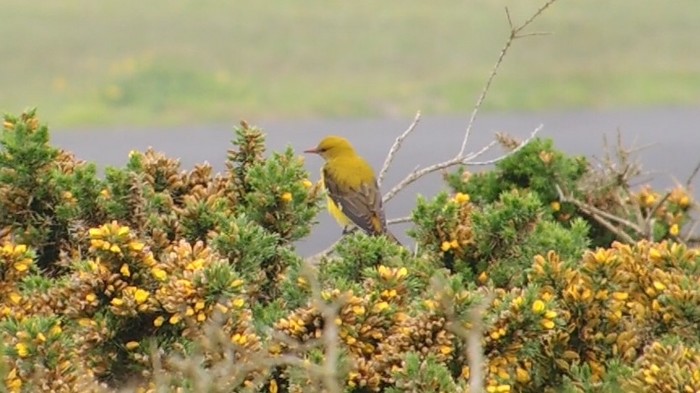
Not much is really known about the “recent” report of the Hoopoe seen recently in Herefordshire, at Kington, so its full-speed ahead towards Wryneck - but there’s really not much to report there either (!), another candidate for the Norwegian Blue Award is all that’s on offer, courtesy of the (now) dead bird on Out Skerries (Shetland) on 1st.
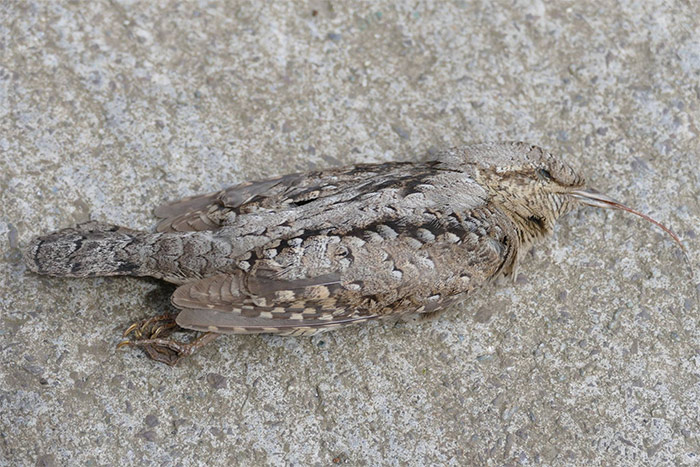
A record of quite some importance for birders in the north of Ireland was the Red-rumped Swallow that was noted at Quoile Pondage (Co. Down) on 28th - if accepted by the NIRBC it will become just the second county record, the only one to date concerns two juveniles that spent three early-November days at Newcastle in 1990. The second record of this week was a fly-through over Covenham Reservoir (Lincolnshire) on 29th.
In such a poor spring for the species and in such generally unhelpful conditions, one of the peak spring weeks for Red-backed Shrikes has passed by with just a quartet of records to bring you news of - a female found a way to Mainland Orkney, seen near Kirkwall on 28th. She was followed by males at Southwold (Suffolk) on 30th and Fair Isle on 1st while there was also a little late news of another male, that had spent a couple of days at Frodsham Marsh (Cheshire) on 28th-29th. The 2nd then saw the appearance of a male on Shetland Mainland, at Dury with another found at Skaw, Whalsay.
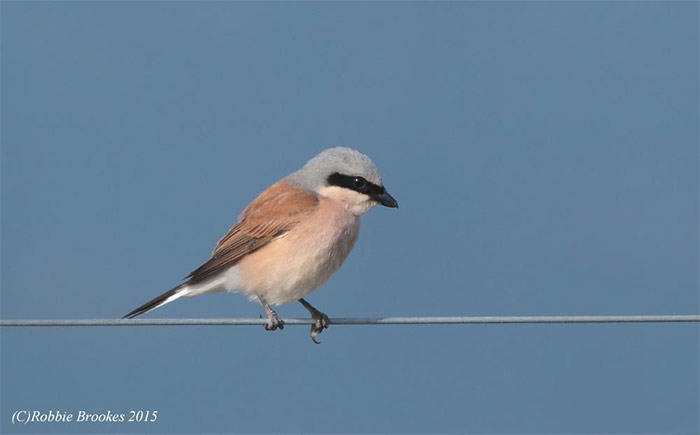
Down in Kent, a strange report came along on 2nd, where a Great Grey Shrike was reported once again.
In west Cornwall a Common Rosefinch rocked up at Lands End on 27th (good job it wasn’t a House Finch as it would get a right good kicking - ship-assistance seems to “work” for untold American spuggies (hello Lark and Song), Mockingbirds and Towhees but not it seems for a House Finch).
Grumping aside, there’s a few more to report, so in Cumbria, a singing male Rosefinch was in gardens at Sedburgh on 29th and one appeared on Lundy the same day, where it remained to 30th and, post the clearing weather and strong southeasterlies, a young male was found on Fair Isle on 1st with two more, including an adult male, making landfall on, where else, North Ronaldsay. Also on Orkney, a female or young male was found at Westshore, Burray on 2nd.
Not a species that usually gets a mention here is Shore Lark - but the unseasonal occurrence of a rather dapper looking male on Bardsey Island (Gwynedd) from 30th-31st had some minds wandering towards the possibilities of a Nearctic Horned Lark for a while, especially given what else has been going on this week.
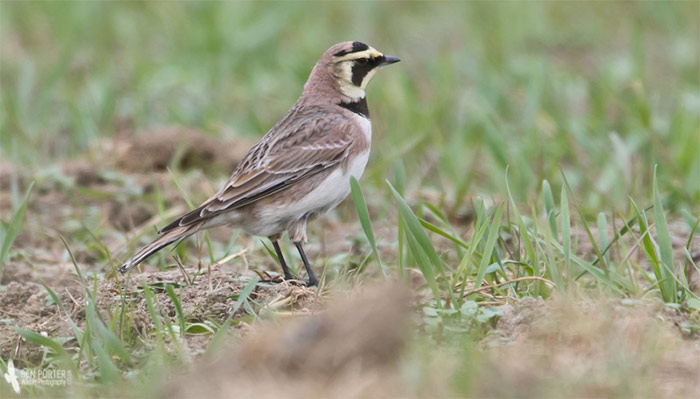
…and what may have been a “so near, yet so far” was the tantalising prospect of a second June Cedar Waxwing - this one described and reported by a non-birder at Rosehill, on St. Mary’s (Scilly) on 2nd. Subsequent searches produced nothing…yet. The first British record was recorded 30 years this month - photographed on Noss on June 25th-26th 1985. This one could develop in the next day or two and the weather has been, as we know, produced a remarkable set of US visitors already.
…rounding things off (because I have to mention I guess) the 10 second report of a Rock Bunting on Holy Island (Northumberland) on 27th - a bird that didn’t see the light of day until after dark on 1st. Onliners reported that the bird was seen by someone who was “100% certain” it was the species it was meant to be, but it only came to light via a submission to the BTO’s Birdtrack system. Just five accepted records exist, including the much-discussed alleged “fake” at Bolton Abbey in May 2012 - an acceptance which generated even more discussion, hot-air and envy about the record…let’s see what’s offered up to the BBRC on this week’s claim.
Despite some superb birds in May there’s little doubting the overall vibe was somewhat downbeat as wave after wave of westerly-type weather continued to trundle across the country - but it looks as if that’s about to change and a significant change is just a few days away.
The deep low that scooted across Britain and Ireland at the end of this review period looks like the finale hurrah for the Atlantic systems (albeit temporarily) as a sizeable ridge of high pressure looks set to plonk itself over us by the weekend - warm (even hot) temperatures are forecast and the winds are due to be coming from deep within southeastern Europe - given the time of year it could open up possibilities for all sorts of really rare birds.
Odds-on favourite to make some sort of significant showing is Red-footed Falcon - sizeable numbers have been reported again across Europe, so we may be knee deep in them come Sunday. We’re still due a Whiskered Tern - Kent’s marshes maybe in the box seat for one of those if the weather does what its meant to. Moving up a gear or two, eyes turn towards Black-headed Bunting - 73 of the 220+ acceptances to date have come in June and that has to be a good shout for the next three or four days.
A Black-eared Wheatear also feels like a decent shout (albeit an optimistic one) for the first few days of the week - there’ve been 10 June records in all, half of them coming before the month hits double digits. River Warbler feels as though it could be on the cards (no idea why - but there are a dozen June acceptances). Or what about something more random - we’re due an appearance of Bridled Tern again soon - seven June records to date.
After that - well, game on…outrageous and fabulously diverse rares abound really - June 3rd has offered Caspian Plover and Fox Sparrow while June 6th has produced stand-out megas such as Tree Swallow, White-throated Robin and Citril Finch.
You can’t take your eyes off the ball at all - June 7th scored the Eastern Towhee - a much-discussed rare on the Northern Isles last week - on Lundy in 1966 whilst Fair Isle’s Bimaculated Lark of June 8th 1976 is a particularly mouth-watering “virtual birding” daydream find. Pop in another Fair Isle treat, the second of three Cretzschmar’s Buntings, found on June 9th 1979 and you have an idea of the quality that has come hither over the years across the seven days that lie ahead.
Those avian equivalents of footballing “ultras” - the hardcore end of the spring rares - are enough to get even the most slovenly of birders out in to the field and searching for their own little bit of history. And out of all of them, there’s an uneasy, queasy feeling that it will be a Caspian Plover that turns the heads this time next week. Or a ridiculous new (yep, new…) wood-warbler in some summery garb…
Make the most of it though - there’s mention of the winds heading back to wet and muggy southwesterlies by next Monday,with northerlies after that…
Mark Golley
03 Jun 2015
Thanks to this week's contributors for their photos, videos and sound files.
Please check out our contributor's websites for more superb birding photos, videos and more.
